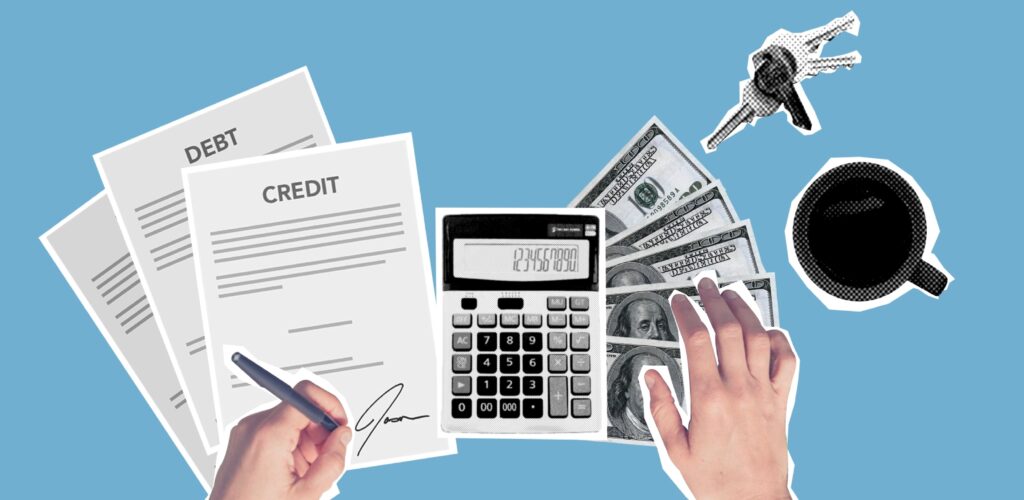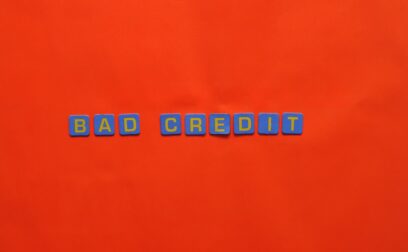Your business credit score can help determine whether your company will get accepted for credit such as a business loan, or business credit cards, as well as the interest rate you’ll be charged. Just like your personal credit score, the higher your business credit score, the better your chances.
This guide explains everything you need to know, including how to check your business credit score.
What is business credit?
Your business credit score represents your company’s creditworthiness. This means it shows potential lenders, investors or suppliers how well you’ve managed your finances in the past and whether you have a good track record of repaying what you owe on time.
Business credit scores in South Africa are calculated by credit reference agencies (CRAs). They do this by looking at financial information such as the type of accounts you file and whether you file them on time.
Different CRAs have their own way of calculating credit scores, so you won’t have one single business credit score. It can vary depending on the CRA. Different lenders will also use difference credit agencies, which means it’s worth checking your credit score across the different CRAs.
Most CRAs use a numerical scale from 0 to 100, with 0 being the worst score you can get and 100 being the best. With Creditsafe, the score indicates the likelihood of a company becoming insolvent in the next 12 months, with 0 being very likely and 100 being very likely. The higher the business score, the more stable the company is.
In a few cases, an alphabetical scale will be used, with E being very bad and A++ being excellent.
Is my business credit score different from my personal credit score?
Yes, a business credit score is different from a personal credit score – your score won’t be the same for both. However, if your business is new and doesn’t yet have much of a credit history, lenders might look at your personal credit score to help them assess how creditworthy you are and whether they are happy to let you borrow. If your personal credit score is low, you might struggle to get accepted.
Be aware that if you’re a sole trader, you’re unlikely to have a business credit score, so lenders will use your personal credit score instead.
It’s wise to keep your business and personal transactions separate as they will be easier to track and it can make filing your tax return a lot easier. Having a separate business bank account can also help prevent issues when applying for credit.
What affects my business credit score?
Each CRA considers different criteria when calculating your credit score, but some of these factors are likely to include:
- Your payment history: Most CRAs will look at whether you’ve paid bills (including utility bills) and credit repayments on time in the past. If you’ve kept up to date with your payments and paid promptly, this will work in your favour.
- The type of accounts you file: All companies must file their accounts at the end of the financial year. CRAs will look at whether the accounts have been filed in full and whether they were filed on time. Filing late will suggest that you’re struggling financially.
- Credit applications: The number of credit applications you make can also affect your credit score. Too many credit applications in a short space of time can make you look desperate for credit and negatively affect your credit score.
- Public records: CCJs or insolvency proceedings against your company can negatively impact your credit score. They can also make it very difficult to secure finance in the future.
What is a good business credit score?
A good business credit score is generally considered to be one in the top 20% of the range (when using a numerical scale). The rate will differ depending on the CRA, but the higher your score, the better your business credit rating.
Below is an approximate breakdown of what potential lenders might consider a good credit score (using a numerical scale of 0 to 100):
- 80 and above: This is generally considered an excellent credit rating and will usually mean your application for credit will be accepted. It might also enable you to secure lower interest rates and better repayment terms, depending on the lender.
- 40 to 80: Businesses looking to apply for credit should be aiming for a score of above 40. Depending on where your credit score sits within this range, a lender might also ask for additional information about the business to assess annual company revenue and previous borrowing history.
- 40 and below: In most cases, lenders will be looking for a credit score of above 40 before they will agree to letting you borrow. However, this will depend on the lender and your circumstances. Providing additional information, such as proof that your company is an established business, might help you.
If your CRA uses an alphabetical scale, a good business credit score would be classed as B or above. This represents low risk and means you’re more likely to be able to borrow at the best rates, as well as secure deals with suppliers.
A score of C or below means you need to take steps to improve your creditworthiness.
How do I check my business credit score?
You can check your business credit score for free with most CRAs. However, if you want a full credit report breakdown, you might have to pay a fee.
Credit Passport
Swoop has joined forces with Credit Passport to enable you to check your credit score online for free. You can get started by registering with Swoop and entering your business details. If you’re already registered, we’ll have all the information we need. You’ll need to connect your bank account and we use Open Banking data to calculate your credit score. You’ll then get a quick overview of your business’ credit health using the traffic light system of green, amber and red, as well as a ‘probability of default’ as a percentage.
You can also sign up to a Credit Passport subscription plan that aims to help you improve your credit score. The Plus plan currently costs R20 a month, with a Premium plan on its way.







 yet? Register here!
yet? Register here!